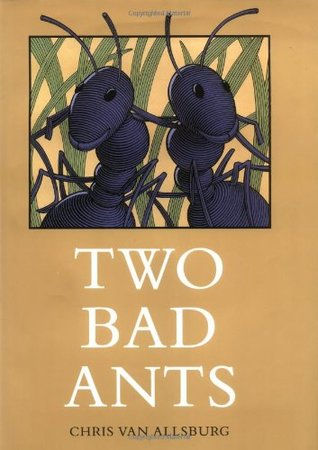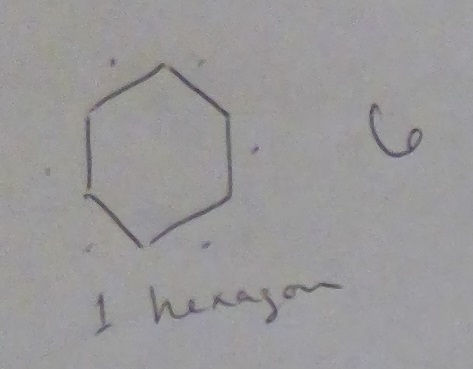Reading Two Bad Ants
- Matt Felton-Koestler
- Aug 20, 2017
- 4 min read

The last time I wrote about connecting math to literacy Parker and I read a "math book"—a book clearly written to illustrate important mathematical ideas. But it's also often possible to make math connections to children's books that have little or no overt math in them.
Tonight, Parker and I read Two Bad Ants by Chris Van Allsburg. In it, an ant colony sets out to collect sugar from a sugar jar in a nearby home. Two of the ants decide to stay behind and live a life of luxury among all the sugar, only to face a number of perils in a human kitchen.
I really liked the scale of the pictures and I think there would be room to ask some kinds of questions related to scale or the size of things from an ant's perspective, but apart from that I was really struggling with how to connect this book to mathematics. So, I decided to take a child-centered approach, that being the theme of this blog series. I asked Parker what kinds of questions this book brought up, what wonderings P had, etc. It took some prodding to get Parker into it, but then P came up with quite a list of questions:
How many ants are there?
How fast can an ant walk?
Can ants really climb a giant wall?
Could they really not be seen [by the human in the story]?
Would sugar not kill them?
Could they travel all that way with a full stomach?
Would the little rocks chipping off the bricks kill the ants if they hit them?
Would they survive all the stuff they were in?
This is why I love children's thinking! I would have never come up with all these questions. Many of them do not have obvious math connections to me (at least not early childhood math connections), but there are still so many great questions here that I just wouldn't have ever thought of. Imagine doing this with a whole class!
Representing 4,000
At Parker's request we went back through the book and offered our guesses about the last question for each peril the ants faced. Then I looked up the size of ant colonies. They range in size quite a bit and are hard to measure, but one number for a "typical" colony in some regions was around 4,000. For another region it was in the "tens of thousands." Parker said we should draw that many on paper (which was great, because it's what I was about to suggest) and asked which number Parker wanted to use—P went for the 4,000 number. We set off making dots on paper.

Our Pages of Dots
Can you guess whose is whose?
I asked Parker if P was counting or had a system for keeping track of the dots. I'm still not sure what the plan is. I think maybe to count them all at the end after we think we're close to 4,000. Parker saw mine and asked if I was doing "five and five." I said what do you think? (hey that's the name of this blog!), so P counted and saw I was doing groups of ten, and then figured out that each double row had 100 dots in it. When I was done Parker asked if I thought I had 1,000 on a page, and I said... wait for it... what do you think? so P counted:
P: 1, 2, 3, 4, ... 10. Yeah, 1,000.
M: But you said ten, ten what?
P: ten hundreds
M: So you're saying ten hundreds is another name for one thousand?
It was getting late so we didn't finish making all our dots. Instead, I reminded Parker that...
Some Problems Take a Long Time
One of the worst lessons children learn in school is that math should be fast. Research shows that many students believe they should be able to solve a math problem in 5 to 10 minutes, and if they can't do it by then they believe they cannot because either "they are incapable of understanding the problem or because something is wrong with the problem itself" (Muis, 2004).
I like to tell kids that some problems take mathematicians thousands of years to solve (although not traditional school problems, things like the history of deciding if zero was a number or understanding the role of the parallel postulate in Euclidean geometry took mathematicians a long time to work out).
Where Can This Go?
There's plenty of work to be done in counting up all our dots and then adding up how many are on each page to see if we get to 4,000. In fact, depending on the way Parker does the dots this would actually be fairly challenging for Parker. P is pretty flexible with numbers, but adding random numbers in the hundreds until we hit 4,000 would be challenging.
In a class of students you might have them group the dots by tens on their page, by circling them to make counting faster (Parker was not on board with this idea—I don't think Parker wanted me drawing on P's work).
Some ant colonies or supercolonies can get into the millions. Representing this many ants as dots on paper can be valuable for visualizing the size of large numbers.
Then there are the various other questions asked above and the possibility of things like scale: "If an ant has to walk across the yard, how far would that be for you?"
Please Post a Comment
What would you explore with this book?
How many pieces of paper do you think it would take to represent a million ants? How did you think about that?


Comments